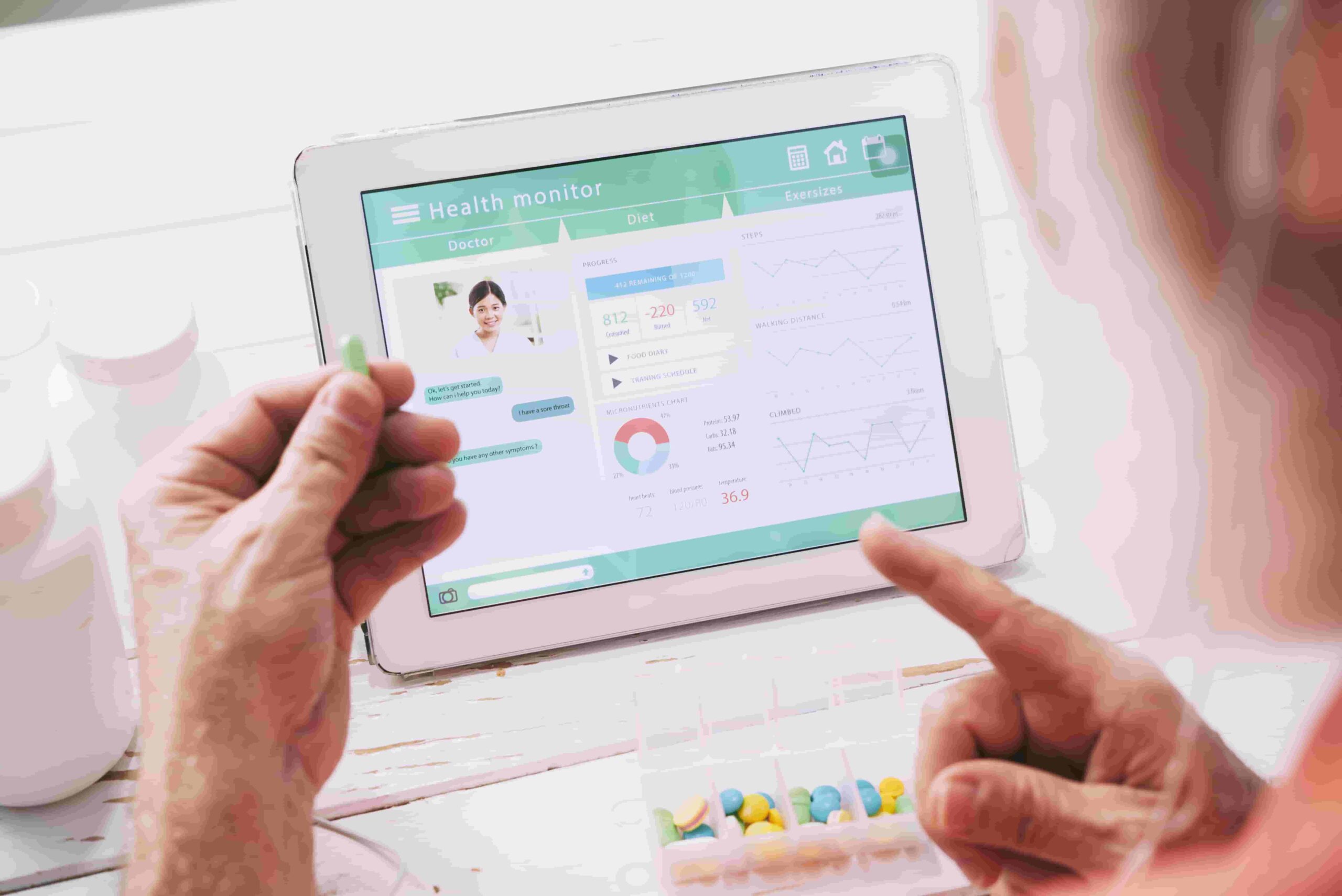Healthcare software development leads the drive toward smarter patient care, streamlined administration, and optimized clinical workflows. Custom digital solutions—such as AI‑driven systems, telehealth platforms, cloud-native infrastructures, and automation tools—empower healthcare providers to adapt to current challenges and anticipate future demands.
Strategic Impact
Custom software like EHRs, CDSS, telehealth portals, and RPM platforms create closed-loop digital systems that center around patients and clinicians. Centralized data improves clinical insights and decision support, while compliance with GDPR, HIPAA, and FDA regulations ensures security and trust. U.S. healthcare IT software reached around $166.8 billion in 2024, with an expected CAGR of 15.5% through 2030
Key Development Themes
AI and Machine Learning Integration
AI integration is accelerating diagnostics and operational intelligence. The global AI‑in‑healthcare market surged from approximately $14.9 billion in 2024 to $21.7 billion in 2025, with projections of reaching $613.8 billion by 2034. Startups like Hinge Health and Sword Health are already expanding provider capacity and cutting clinician workloads through AI‑powered automation
Telehealth & Remote Patient Monitoring
Mobile and web telehealth solutions, enabled by cloud and analytics, are reshaping outpatient care. Telehealth software is projected to grow from $9.2 billion in 2025 to $39.6 billion by 2035 RPM technology has demonstrated reductions in ER visits and hospitalization durations through real‑time monitoring and alert systems
Automation in Clinical Workflows
AI‑powered documentation tools, such as automated medical scribes, alleviate clinician burnout and streamline note-taking. Evidence shows 4 in 5 GPs report time saved and improved patient rapport. Alongside, e‑prescribing systems reduce errors and optimize workflow efficiency.
Development Frameworks & Best Practices
Structured lifecycles are essential: requirements gathering, UX/UI design, prototyping, regulatory compliance, secure deployment, interoperability using standards like FHIR/HL7, and continuous maintenance. Cloud-native deployments (AWS, Azure, GCP) support scalable, secure architectures. Involving clinicians in iterative testing improves adoption and usability.
Business-Level Benefits
- Operational efficiency: Automation in scheduling, billing, documentation, and supply chain reduces administrative overhead and costs
- Clinical accuracy: Integration of decision support and e‑prescription systems minimizes errors.
- Improved care access: Consumer-facing apps and remote monitoring tools increase patient engagement and autonomy.
Current Market Movement
- Big Tech momentum: Companies such as Amazon, Nvidia, Microsoft, Apple, Google, Oracle, Salesforce, and Palantir are injecting AI into diagnostics, imaging, and workflows through their platforms
- Healthtech investment shifts: VCs are directing funds toward AI-enhanced startups that can demonstrate measurable clinical and operational value
- Operational software gains: Systems like TeleTracking are delivering measurable gains in throughput, reducing wait times and freeing up bed capacity
- AI startup acceleration: Companies such as NexusMD are streamlining documentation and enhancing emergency department workflows, while emphasizing data privacy safeguards
Challenges & Engineering Solutions
Key hurdles include privacy/security risks, interoperability gaps, alert fatigue, UX complexity, and regulatory oversight. Addressing these requires privacy-focused architecture (e.g. federated learning), clinician-centered UX design, modular AI services, and rigorous compliance testing.
Conclusion
Healthcare software development is now foundational to delivering efficient, safe, patient-focused, and scalable care across digital platforms. AI, cloud, automation, telehealth, and data interoperability are pushing the industry forward. Providers and technology teams that prioritize regulation-aligned development, clinician collaboration, and iterative innovation will shape the future of digital health.

